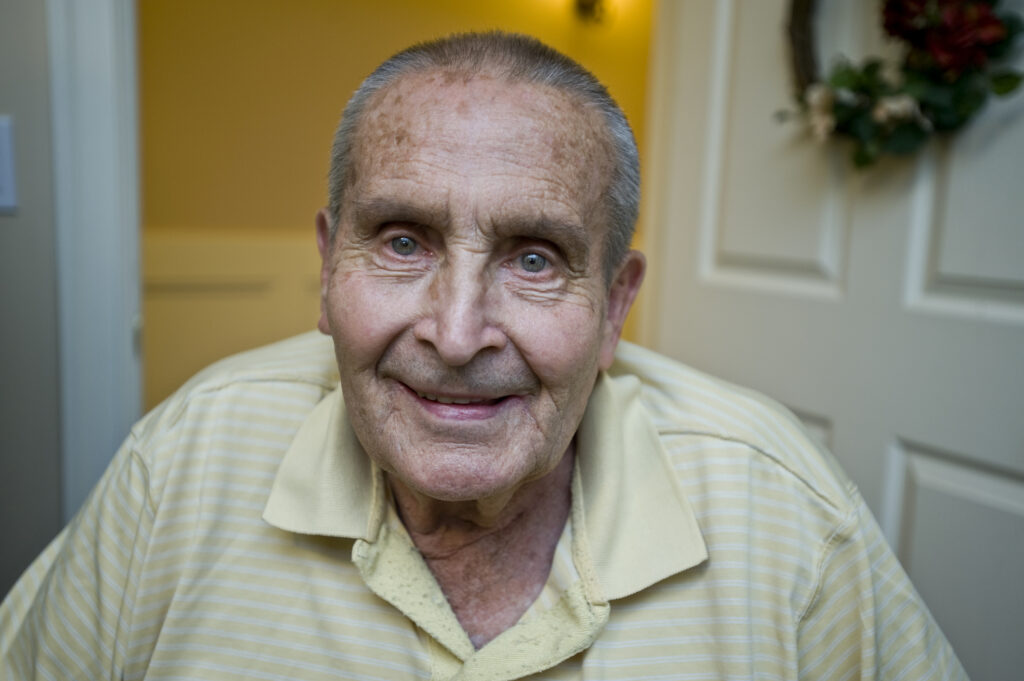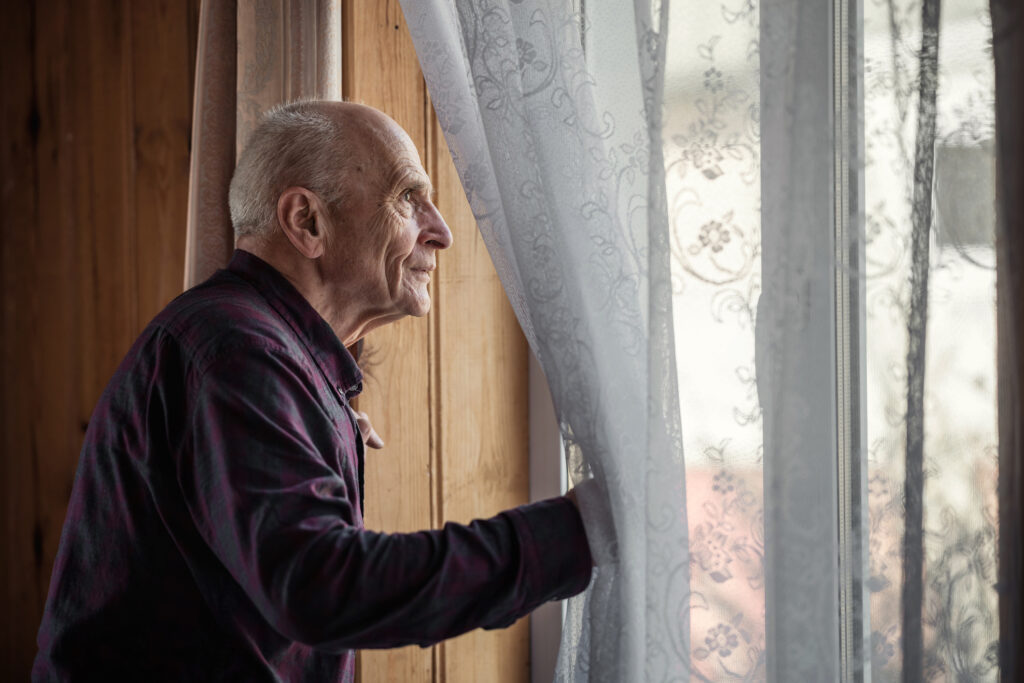
Using a loan to build more homes
Abbeyfield Buckland Monachorum Society is adding five new homes to its sheltered housing scheme. The Society is funding the project with a combination of grants and a loan. Find out how Treasurer Nicholas Maxwell found the loans process…
Why did you decide to create five more studio apartments?
There’s a real shortage of sheltered housing accommodation for older people in Devon. We built our original property in 1992 and renovated it in 2014 to make the rooms larger, add ensuite bathrooms and so on. The long-term plan was always to expand the property, so we bought a piece of land next to it in 1999.
In 2018, we decided it was time to extend, but it took a while to sort out some covenants on the land, get planning permission and so on. And then Covid hit, which first brought everything to a halt and then led to a boom in the building industry. So, it wasn’t until 2023 that we could make the decision to finally go ahead.
And you decided to take out a loan to fund the build?
I met Carolyn Sims from Charity Bank at a function in Taunton. Through discussions with Carolyn, Abdul A Ravat (Head of Development & Relationships at Abbeyfield Living Society), and Homes England, we realised we could fund the whole project with grants and a loan. Homes England is investing significant levels of grant funding towards the cost of construction as the apartments will be let out at social rents. We’re also getting a grant of £30,000 from West Devon Borough Council.
I believe you borrowed an additional £137,000 from Charity Bank to refinance another loan?
Yes. We took a loan out with a different provider back in 2015. The interest rate was at least two percentage points above what Charity Bank was offering, so there was a definite saving to be made.
Did you look into getting a loan from any other lenders?
We did contact another social impact lender. I also spoke to another bank as we have a current account with them, but when I was told the rates that were being offered, it was clear this wasn’t a market that they wanted to enter into. In my experience, there wasn’t much point going to other high street lenders as the rate of interest they’d charge us would be higher.
My understanding is that Charity Bank is funded by other organisations to allow them to support good social impact projects with fair rates. So, I didn’t feel that we would get anything better elsewhere.
Why did you choose Charity Bank rather than the other social lender you were talking to?
We put the project out to tender, had the quote back and applied formally to Homes England for a grant through our partnership with Abbeyfield Living Society who are an investment partner. Nothing happened for a couple of months and then, all of a sudden, Homes England came back with a very positive response in December 2023. However, we needed to have the loan agreed before we could get the grant approved. We wanted to move quickly, as the fear was the quote we had for our preferred contractor would soon go up, due to wage rises, inflation in the cost of materials and supplies and so on.
Charity Bank was very responsive, and very helpful when it came to valuations and so on, which meant that we could tell Homes England, “Yes, we’ve got the loan funding agreed.”
The other social lender was originally offering a higher rate and our discussions never progressed to an offer of funding. So, we moved forward with Charity Bank. By the end of January, we knew we had all our funding in place. The Homes England bid was agreed and by March, we had received the tranche payments for acquisition and start on site. This early injection of cash help us to consolidate our other loans and overall improve development cash flow.
Will your loan repayments be covered by the fee that the residents pay?
Yes, we’ve done cash flow forecasts and can easily repay the loan.
The new residents will clearly benefit from the extension. What are the benefits to Abbeyfield Buckland Monachorum Society?
I think the huge benefit to us is that we’ve had this land since 1999 and it was bought with the intention of expanding, and some 25 years later, we’re finally going to achieve what the original Trustees envisioned.
It also makes financial sense to expand. Our biggest cost is staff wages. Residents receive a main meal at lunchtime, a smaller meal at teatime, and ingredients to make their own breakfast. We don’t need to increase staff by 50% to expand from 10 to 15 homes, so the cost of providing each individual meal comes down. While we’re not a profit-making organisation, we do need to cover our costs and be able to put some money aside for long term maintenance of our assets.
There are benefits to the community too. We could have sold the land, and a developer would have tried to build houses on it, but the neighbours are happy that we’re developing it ourselves. They’ll have a neighbour who’ll be relatively quiet, and if they find themselves in the position of needing sheltered living accommodation in the future, they won’t need to move away from the area.
How did you find the process of applying for the loan?
Up to the end of January 2024, it was made relatively easy. Carolyn came to visit us in Devon in October, as did Abdul, so we were able to talk things through together properly, which was marvellous.
When it came to signing the formal loan agreement, which was sent to us in February, there were several conditions to satisfy. We had a month to sign the loan agreement, but then it can take a few months to satisfy those conditions. The solicitors acting for Charity Bank seemed to drag their feet. Our solicitors provided all the information, and the fees were paid, but it wasn’t until July that the other solicitors finally issued their report, which was extremely frustrating.
We haven’t needed to draw down any of the money from Charity Bank yet though, as we had acquisition and start on site tranches funds from Homes England to draw on.
How did you find Charity Bank as a lender? Was the team responsive?
Yes. One team was involved in getting us to the legal agreement stage, and then they handed us over to another team going forward, but we have two key people who we can speak to if we need anything.
Do you think there’s anything that charities can do to make the process easier?
I think we were very lucky in that our Chair has a background in the building industry, so he understands everything to do with the tender process and can engage with the professionals about the building work.
And because of my financial background, I’ve been able to deal with that side of things. So, I think having those kinds of skills on your board is invaluable.
You’ve used some of the funding for energy efficiency work and to install renewable energy solutions. What made you decide to do that?
We’ll have solar panels and air source heating, so we won’t be relying on gas or anything like that. It seemed like a bit of a no brainer really, when you see the costs of utilities going up as they have in recent times and the financial impact this then has on our residents who are on modest incomes. Unlike domestic homes, we don’t benefit from the energy cap. Doing the work now means we’ll benefit for a long time to come.
Would you recommend that other charities and housing providers consider Charity Bank if they need a loan?
Definitely, yes; I was very impressed.
If you need a loan for your sheltered housing scheme, please visit https://www.charitybank.org/charity-loans
About Charity Bank
Charity Bank is the loans and savings bank owned by and committed to supporting the social sector. Since 2002, we have used our savers’ money to make more than 1280 loans totalling over £500m to housing, education, social care, community and other social purpose organisations.
Nothing in this article constitutes an invitation to engage in investment activity nor is it advice or a recommendation and professional advice should be taken before any course of action is pursued.


